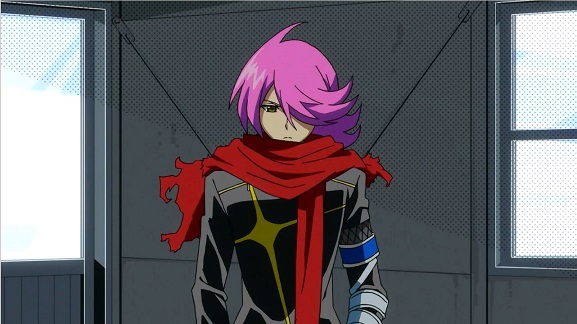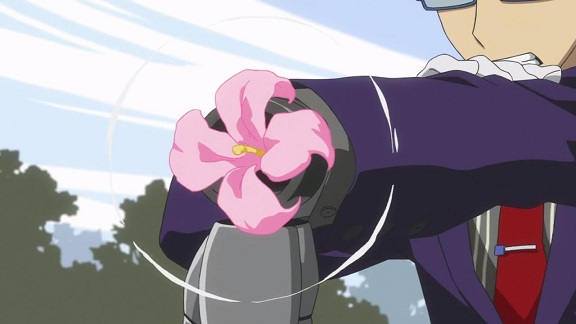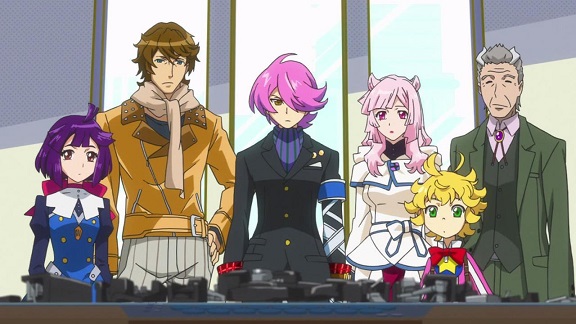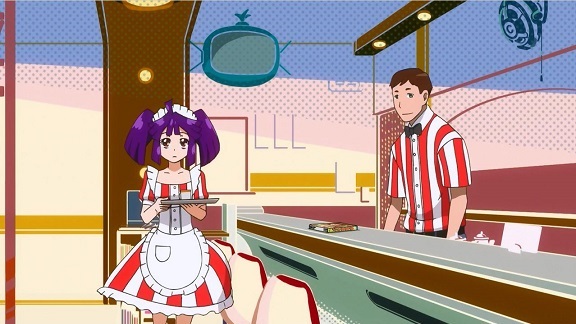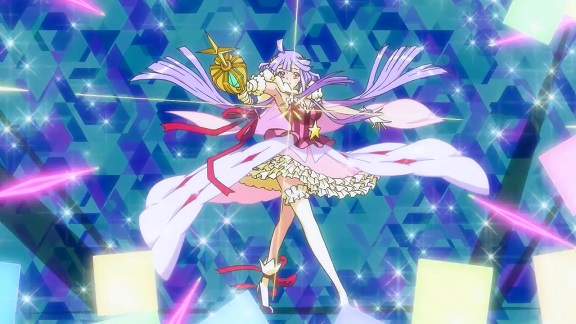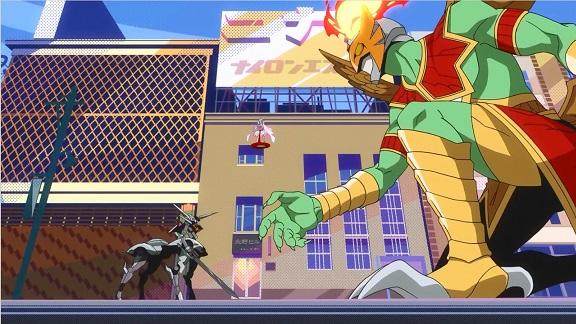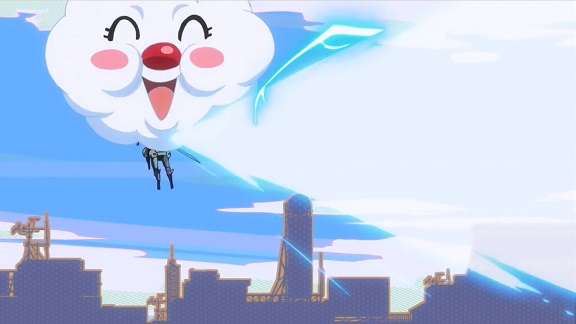I’ve already discussed this season’s moe shows; now it’s time for the rest. Currently I’m following almost thirty series, of which eighteen are some form of action/adventure show. That is rather a lot and not all of them are objectively good, but nevertheless there are a lot of excellent series here, if none of the level of last season’s Shouwa Genroku Rakugo Shinjuu. Listed below are my impressions so far of the eighteen series, ranked in other of how much I like them as well as their overall quality.
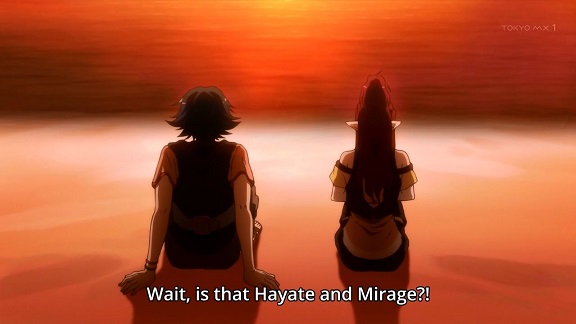
- Macross Delta
It shouldn’t be a surprise that I find this the best series this season considering how much attention I’ve paid to it already. Macross was and is my first love in anime and the latest installment of it hasn’t disappointed me yet. The only minor quibble I’ve had with it is that Mirage could use some more screentime, something that was remedied a bit in episode nine. I like the characters, I like the plot, I of course like the setting and especially the music. Ikenai borderline is a song I’ve been playing almost every day for weeks now.
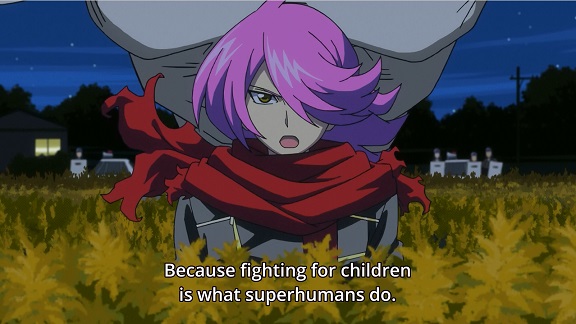
- Concrete Revolutio
I loved the first season of Concrete Revolutio and that hasn’t changed for the second season. This is an impressively ambitious superhero story, which reminds me of Astro City in its approach to tell stories using a setting created by mixing and matching half a century of anime tropes and archetypes. The other comparison could be to Watchmen in how its using superheroes to tell a political story.
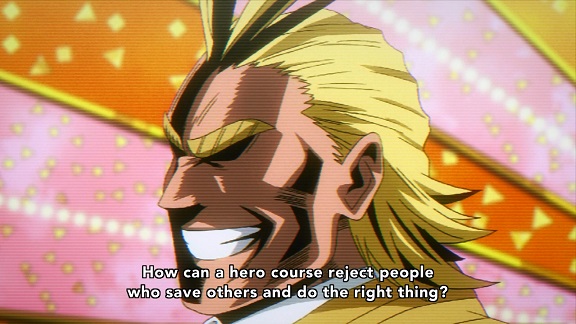
- My Hero Academy
The other superhero show this season is much more straightforward, but offers that same basic pleasure of seeing a Japanese take on the genre, mixing the superhero origin story with the shounen battle manga. Midoriya Izuku is one of the few people without superpowers in a world where everybody has them, but still wants to be a superhero, being inspired by the world’s greatest hero, All Might. He gets his wish when All Might shares with him the secret of his power and enrolls in the world’s greatest superhero school, U.A. High School while his new superpowers are barely controlled. Well written and animated, cheerfully optimistic, this series subscribes to the essential creed of superheroics: with great powers comes great responsibility in a way few American superhero titles still do.

- Re Zero kara Hajimeru Isekai Seikatsu
Take your average otaku gets transported to a fantasy world plot, give the hero the power to reset time, but make it so it only kicks in when he dies. That’s the perfect recipe for doing a it of deconstructing/torturing of the otaku hero. The protagonist Subaru starts off as a cookie cutter genre aware otaku insert, but thanks to that process of repeatedly dying brutally then coming back to life knowing he has to find a way to avoid the same brutal death again he gains a lot of depth. I like that Re:Zero takes its time to tell its story, that there are multiple repeats per plot point.
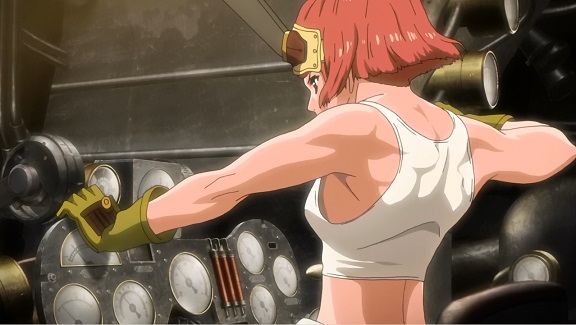
- Koutetsujou no Kabaneri
Created by the studio behind Attack on Titan this looks a lot like it, with humanity living in ghettos to protect themselves from a supernatural, almost invincible menace. The difference is that a) these are zombies rather than giants, of a particyularly tough sort and b) it’s a steampunk setting, the details of which reminded me a lot of the classic Ghibli movie Monoke Hime. The protagonist is both a genius inventor, inventing a gun that can actually destroy a zombie with one shot, something nobody else can, and an incredible dumbass, which is part of what makes this fun because the show knows he’s an idiot. So far the only thing that bothers me is that this is only scheduled for thirteen episodes, which is nowhere near enough to come to a proper resolution. Onwards to season two?
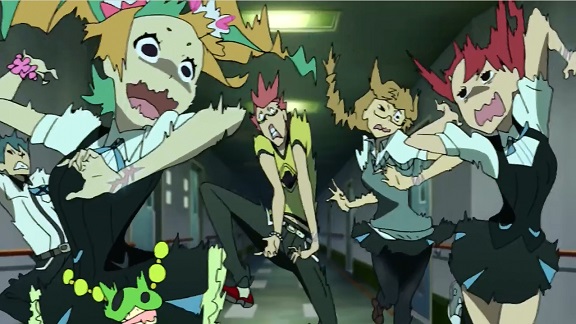
- Kiznaiver
Kidnap a group of (anime) high school archetypes and give them wounds that forces them to feel each other’s pain, all in the name of world peace: because if everybody could only feel everybody else’s pain there would no longer be war. A remarkably stupid idea even for anime, but Trigger makes it work. Kiznaiver works best when it focuses on the characters rather than on its supposed plot and it’s their interactions that makes it worth watching. You do wonder why they’re so compliant though; I’d expected more rebellion from at least a few people. Let’s not forget that the people behind the project are at least guilty of unethical medical research, kidnapping and torture. - Kuromukuro
A high school student is visiting her mother, who is the director of a huge research lab looking into buried alien artifacts discovered sixty years ago, just when the lab comes under attack from a series of mecha. She finds herself being shot at by one of the mecha which had managed to enter the building she was in, only to be saved by a buck naked samurai she just freed from one of the artifacts. an intelligent, well written mecha show which reminded me in feel a bit of Xam’d Memories or Eureka Seven with its cast of competent adults as well as the obligatory high school aged heroes. - Haifuri
A bit of a bait and switch with this one, as it was billed as a cute girls doing cute things — at sea! Instead it turned out to still be a cute girls doing cute things at sea, but they’re also fighting what seems like a worldwide conspiracy to kill them as they’re falsely accused of mutiny. So muhc of the world building makes no sense: Japan has largely been flooded decades ago to the point that most of the population lives in floating cities, the airplane was never invented and for some reason we have WWII warships crewed by schoolgirls in a history that never had a WWII, while there are also modern warships that look pretty much like their counterparts here, which makes little sense in a world without aircraft. But oh well, it looks cool and that’s what this series runs on. The mixture of slice of life stuff and battle action is well done; it reminded me a bit of KanColle but better. - Netoge no Yome wa Onnanoko ja Nai to Omotta?
This looked like it was going to be a thrash harem show, but turned out surprisingly thoughtful. Our protagonist was once severily traumatised when the cute girl he proposed in game to said she actually was a middle aged bloke, but has recovered enough to not care about the real gender of the current cute girl he’s married to in game. Then he meets up with her and not only does she turn out to actually be the exact same cute girl she was in game, their two fellow male guild members are also cute girls. And going to his own high school. As do several others. But nothing leads to romance except with the main girl, who is slightly confused about the distinction between game and real life, while he is slightly too rigid in making that distinction. The rest of the series is them attempting to reach a compromise between their two points of view. if I’m honest, I’m more on her side than on his. Great fun and it’s actually funny without resorting to harem anime cliches. - Maiyoga
Written by Okada Mari, this at first glance looked like a horror series, but pretty soon revealed itself to be more of a horror comedy, just played absolutely straight. Okada Mari supposedly has a reputation for the dramatic and overblown and she uses that reputation here to great effect. Maiyoga is the story of thirty dumbasses who for one reason or another turn their back on society to go on a tour looking for a legendary lost village. When they find it all their deep seated traumas come to the fore. Made even better by a protagonist - Maho Girls Precure
I’m far more into magical girl shows than any grownup man should be. This is the first Precure series I’m following on a week by week basis and it’s utterly adorable. As per usual you have the two girls, one brainy, one more sporty, with the former being a witch and the latter a normal girl, who together turn out to be the legendary Precure magicians. They have a quest to collect a series of gemstones which the big bad is also looking for. There’s a monster of the week to defeat, which is created by the various mini bosses from ordinary things and usually some sort of mild obstacle for them to overcome in their daily lives as well. Nothing innovative, but the execution is done very well and it’s a relaxing twenty minutes spent each week. - Space Patrol Luluco
The other Trigger show this season, which is basically a mash note to itself. Short, deliberately crude in the style of Inferno Cop and with lots and lots of guest stars from earlier Trigger series - Tonkatsu DJ Agetaro
Katsumata Agetarou works at his familys tonkatsu restaurant in Shibuya, but he doesn’t find his work exciting. One day he delivers an order to a dj at one of the night clubs in the area, falls in love with dj-ing and wants to become one himself, especially after he realises that the skills his father teaches him in the restaurant are remarkably similar to what’s needed to dj… A nicely bizarre, deliberately crudely drawn series. Each episode is less than ten minutes long which is just enough to tell a story without getting boring. - Bungo Stray Dogs
A detective agency filled with superpowered people named after famous Japanese authors, fighting crime and solving mysteries. There are hints of an overall plot but on the whole this is a case of the week series. Storywise it’s meh, but the animation is great. - Sousei no Onmyouji
Two young exorcists fighting against demons are told to get together and produce the saviour that will finally end the war with the demons. They refuse. Hilarity ensues. A fairly typical shounen battle show, with the male lead having to overcome past trauma that made him reject being an exorcist, while the female lead is the up and coming superstar of their generation. This started out relatively strong, but since then has had far too much filler, with the story moving at a snail’s pace. What keeps it enjoyable is that the two protagonists are given roughly equal screen time and treatment and they mesh well together. - Joker Game
This looked so much more promising in the previews than it turned out to be. A spy thriller series set in 1937, in the runup to WWII? From a Japanese point of view? That could be interesting if the show takes its setting seriously, in a way that e.g. Alan Furst’s spy thrillers do, with protagonists of ambiguous morality. Japan after all was already engaged in imperialistic warfare in China in 1937 and was ruled by a fascistoid, militaristic regime aiming at achieving hegemony in Asia. Heck, the spy agency’s cover of “Greater East Asia Cultural Society” is of course a reference to the Greater East Asia Co-Prosperity Sphere, so there is some acknowledgement of the morally grey (at best) atmosphere the show should operate in. Unfortunately however it seems to focus more on simple spy stories devoid of much politics, rather than actually engaging with these issues. - Gakusen Toshi Asterisk
The second season of this is roughly on the same level as the first, but more focused and with fewer harem antics. I blame Digibro for being less able to enjoy it this time around though, as that series of videos he did made me aware of all the series’ flaws I can’t ignore anymore. With three more episodes to go it looks like this is aiming at a third season, unless they resolve things very quickly. - Hundred
Do you like Infinite Stratos? Would you like to see it again? Than Hundred is the series for you. A decently executed action harem series, which looks and feels remarkably old fashioned in its insistence on comedic falling and grabbing of tits.
